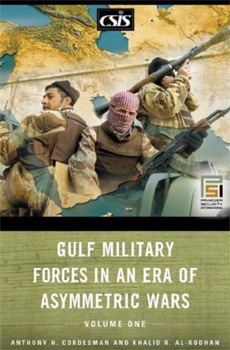|
INTRODUCTION: THE NEW BALANCING ACT IN THE GULF
For most of the modern era, the internal security structure of the Gulf has been dominated by a ‘‘four cornered’’ balancing act between Iran, Iraq, Saudi Arabia, and the southern Gulf States.
Iran and Iraq have dominated the regional arms race, competing and sometimes fighting with each other. Saudi Arabia has sought to become a major regional military power in its own right, sometimes allied with the smaller Gulf States and sometimes divided from them by historical rivalries, Saudi ambitions, and various border disputes and claims. The southern Gulf States have sometimes been the target of Iranian and Iraqi ambitions, but have often concentrated on feuding with both Saudi Arabia and each other.
Two outside powers, Britain and the United States, have been the ‘‘fifth corner’’ in this security structure. Bahrain, Kuwait, Oman, and Qatar all host U.S. bases and power projection facilities, and Oman has close ties to Britain. The United States, in particular, has effectively dominated the regional security structure whenever it chose to directly intervene. These interventions included aiding North Yemen against South Yemen, intervening in the Iran-Iraq War by reflagging Kuwaiti tankers in 1987–1988, leading the liberation of Kuwait in 1990–1991, and invading Iraq in 2003. In the process, the United States has gone from being ‘‘over the horizon’’ to ‘‘constantly in sight.’’
In spite of the creation of regional institutions like the Gulf Cooperation Council (GCC) in 1981, Gulf ‘‘security’’ has been the product of largely uncoordinated national efforts. Iran and Iraq have always acted as independent powers. Each of the southern Gulf States has pursued its own path to national security, and the smaller Gulf countries have relied on the power projection forces of the United Kingdom and the United States for security and as a counterbalance to their neighbors.
.....
Acknowledgments
We are grateful to so many people who have contributed in so many ways to this book. We want to thank many regional, U.S., and European officials, who cannot be mentioned by name, for offering their time, comments, suggestions, and data to earlier versions of this book. We are also grateful to so many research assistants who have contributed to the drafting and research of this book, including William D. Sullivan, Paul S. Frederiksen, Nikos Tsafos, and William Elliott.
The analysis in this book relied heavily on the work of many governmental and nongovernmental agencies, particularly the International Institute for Strategic Studies, Jane’s, the Federation of American Scientists (FAS), GlobalSecurity.org, the Energy Information Administration (EIA), the U.S. Department of State, the U.S. Department of Defense, and many other defense and energy agencies. In addition, the analysis relied heavily on the work of many regional, military, and security experts. The analysis of the Saudi internal security forces drew heavily on the work by Dr. Cordesman and Nawaf Obaid’s work on the Saudi National Security in late 2005. |
